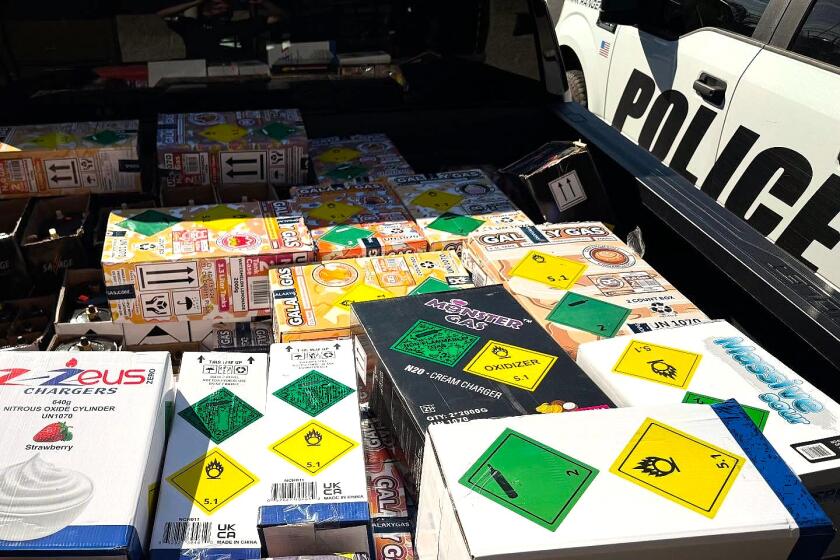The strokes of Sumi-e
- Share via
I admit I don’t know very much about Japanese culture other than what I remember from “The Last Samurai” and what goes into the rainbow roll I had yesterday for lunch. So I was pretty eager to attend last Sunday’s Sumi-e workshop at the Art A Fair, led by Master Toyokuni Honda.
Walking into the beautiful gazebo where the workshop was held, I immediately noticed Honda’s artwork filling up nearly every inch of the perimeter. Intricate designs on long white cloth and colorful masterpieces on small display easels surrounded the workshop table. As people sat and waited for the workshop to begin, I talked with Honda and his interpreter, Takuei Yoshida, about the artwork on display and Honda’s journey to Laguna.
What caught me by surprise was that Honda had not been learning and creating Sumi-e artwork his whole life. In fact, between the ages of 18 and 30 Honda painted only Western-style art. His work was primarily abstract and done in oil and acrylic — vastly different from the style he is known for today. It wasn’t until 1971, when Honda visited the ancient Buddhist temples of Mongolia, that he became inspired to pave a new path for his artistic career.
“I was in complete awe of the murals inside. I got a special feeling inside,” Honda said.
We began the workshop with an explanation about the core basics of Sumi-e artwork. Everything, from the complex artwork depicting a woman hanging behind him to the simple beginner’s palm tree we were about to paint, consists of portions or extensions of circles and lines. By taking an initial quick painting of a cat and using it as a base for a more intricate lion, Honda showed the versatility of Sumi-e and the many variations that can arise from a single image.
As we started on the palm tree, Honda expressed the important role nature plays in Sumi-e art.
“The most important thing is how to achieve harmonization between nature and the heart,” he said.
It is for this reason, he said, that he feels Sumi-e presence is most needed in the world.
“Especially when we hear bad news about the environment, now is the time Sumi-e should be appreciated. If something happens, it might be too late. Sumi-e teaches to pay more attention to the harmony in nature,” Honda said.
Using natural inks made from charcoal soot, crushed shells, and stones and organic paper, it seemed true that nature was indeed a high priority in Sumi-e artwork. And being tense and overanalyzing are two things that are highly discouraged in Sumi-e art. Honda showed us how smelling the ink block puts the mind and soul at ease. And when I went back to fill in a white spot in my painting, Honda stopped me.
“That white part is there for a reason. That was the expression of your heart at that moment. Even white space is important,” he said.
After finishing our paintings, Honda put a final touch by marking our work with his signature red stamp. I came into the workshop stressed from finding parking and hot from the August heat, but I left with a much cooler and peaceful perspective. Honda was in Laguna Beach until Wednesday, then headed to Northern California for another project. He will be leaving for Japan on Aug. 17. For more information, call (949) 249-2955 or visit www.nekomachi.com.
All the latest on Orange County from Orange County.
Get our free TimesOC newsletter.
You may occasionally receive promotional content from the Daily Pilot.



